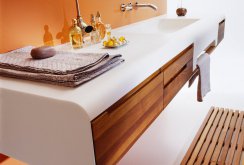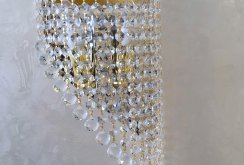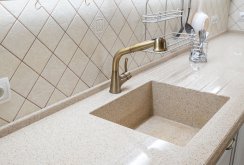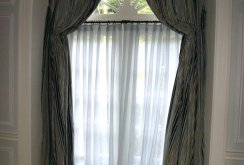Heating in the house: basic parameters
To provide suitable living conditions in the home during the cold season, a system is needed to help maintain the right temperature. The heating system maintains comfort in the room, so you should know the options for heating systems to choose the one that suits you. An overview of heating systems can be found in the catalogs of manufacturers.Varieties
Heating systems differ depending on various characteristics.Water
The most popular type of heating. Its advantages are undeniable in comparison with other species. The working surfaces of the pipes are not very hot. With economical fuel consumption in all rooms, the optimum optimum temperature is maintained. The system operates silently, has been in operation for a long time, and does not require complicated maintenance and repair. The main component of this system is a boiler for heating water. Water circulating through pipes is a carrier of heat to all rooms. After passing through the entire circuit of the heating system, the coolant becomes cold and returns to heat in the boiler. A system with water circulation due to a pump became more in demand.Aerial
Heating is widely used in public and industrial premises. The premises are heated by mixing heated air with the inside and cooling to the temperature of the building. Then the air heats up again. Air heating can be local or central. With local heating, the room is heated by heaters, where the heater is steam or water. The main equipment here is a heating device and a fan. Central heating by air is carried out in any buildings where there is central ventilation and there are no contradictions with the fire safety rules.Electric
An electric convector is an effective type of heating. It is enough to connect it to the mains and install it in any convenient place. The air located at the bottom of the room, passing through the heating element of the convector and increasing in volume, moves up. The electronic system maintains the desired temperature on the sensor located at the bottom of the device. After a certain period of time, the sensor captures the temperature in the building and determines whether the heating element is turned on or off. When the doors are opened frequently and a large amount of cold air is launched into the room, air curtains are installed in the doorway. The most popular are the air-thermal compact curtains. These models protect open doors from frosty air, due to the occurrence of jet air barriers. Due to such devices, heat loss is reduced by approximately 2 times.Classification of materials for the manufacture of heating
A comfortable microclimate in the building creates well-chosen heating.Radiators and other devices are made of the following materials:- Cast iron. For heating systems, casting technology and gray cast iron containing carbon are used. In order to improve physical characteristics, the mixture contains modifiers. Cast iron appliances are durable, not afraid of corrosion, not amenable to mechanical damage and alkali. The disadvantages include the large weight of cast iron, which complicates the installation.
- Aluminum. Lightweight material with excellent heat dissipation. Heating elements are produced by casting or extrusion. Metal poorly resists corrosion, therefore its surface requires coating with a layer of polymers.
- Steel. The material is obtained by combining iron and carbon and has a high level of strength. Devices heat up very quickly and require a minimum of coolant. Increases resistance to corrosion, reliability and durability of metal coloring.
- Copper. Very expensive metal. It is highly resistant to corrosion, does not interact with chemicals, durable, long-term operation, with good thermal conductivity. The soft plastic structure of the material helps withstand enormous temperature changes and evenly distribute loads. Copper has a light weight and a beautiful appearance.
- Brass. This is an alloy composed of iron, lead, copper and many other components. They are characterized by a high degree of thermal conductivity and excellent wear resistance. The alloy does not respond to the presence of chlorine, strong, durable. The disadvantage is abrasive wear in bends and turbulences, therefore leakage is possible.
The choice of radiators in size
In heating appliances, the main parameter is heat transfer, especially if the model is placed under the window. Heating devices are selected in accordance with some requirements:- the length of the device should not be less than 75 percent of the width of the window;
- distance from the windowsill - from 6 to 12 cm;
- from the floor - from 8 to 12 cm.
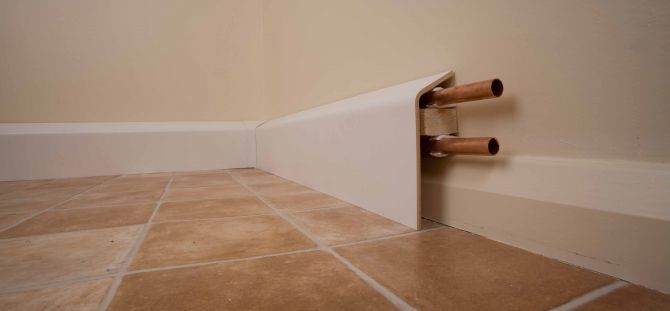
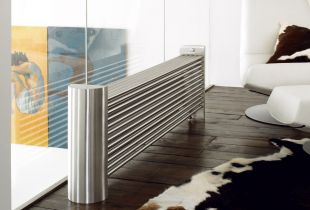 Radiator in the interior: useful technique and decorative element
Radiator in the interior: useful technique and decorative element